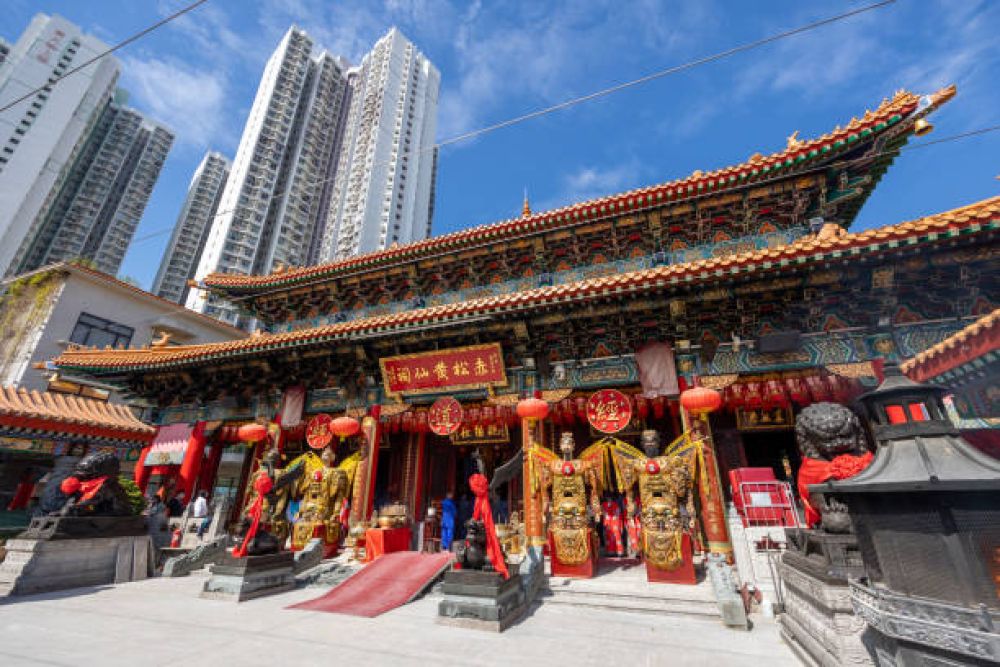

The Wong Tai Sin Temple is a well-known shrine and major tourist attraction located in Hong Kong, China. Dedicated to the Great Immortal Wong (or Huang Daxian in Mandarin), this temple is a prime example of traditional Chinese architecture and is one of the most important religious sites in the city.
The origins of the temple date back to 1921 when a Taoist priest, Liang Ren-an, brought a portrait of Wong Tai Sin from Guangdong, mainland China to Hong Kong. What began as a private worship pavilion for a local Taoist society eventually evolved into the significant religious complex of today. As the temple's fame for fortune-telling and prayers answered ("what you request is what you get") grew, so did its importance as a cultural and spiritual center.
Since the 1950s, the temple has become a hub for Chinese folk religion, attracting visitors not just from the local area but also overseas. The temple was further popularized by word of mouth, with many claiming their prayers for health, wealth, and family blessings were answered. This surge in popularity led to a corresponding increase in tourists intrigued by the temple's reputation and rituals.
In recent years, Wong Tai Sin Temple has adapted to the changing tourism trends. It now offers cultural experiences and guided tours in multiple languages to cater to the diverse international visitors. The temple remains famous for its fortune-telling practice, known as Kau Cim, where devotees shake a bamboo cylinder containing fortune sticks until one falls out. This is interpreted by a fortune teller, providing insight into the visitor's future.
Moreover, the temple has embraced the digital age, with a growing online presence allowing potential visitors to tour the site virtually. What used to be a religious pilgrimage has transformed into a multifaceted tourist destination that seamlessly combines spiritual worship with cultural exploration.
In response to the global movement towards sustainable tourism, the management of Wong Tai Sin Temple has implemented measures to reduce its environmental impact. Efforts to preserve the temple's natural surroundings and ensure a respectful, serene experience are evident. The temple also encourages eco-friendly practices among its visitors as part of its commitment to protecting the site for future generations.
The tourism industry, including visits to Wong Tai Sin Temple, has inevitably been impacted by global events such as the COVID-19 pandemic. However, the temple has shown resilience with new protocols to ensure the safety and well-being of its visitors during these challenging times. As travel restrictions ease, Wong Tai Din Temple is expected to regain its status as a must-visit destination for tourists seeking spiritual enlightenment, cultural insight, or simply a unique visit in the heart of Hong Kong.
The history of tourism at Wong Tai Sin Temple highlights the site's successful transition from a local place of worship to an internationally recognized destination. It stands as a testament to the enduring appeal of cultural and religious tourism and continues to be a key component in Hong Kong's tourism landscape.